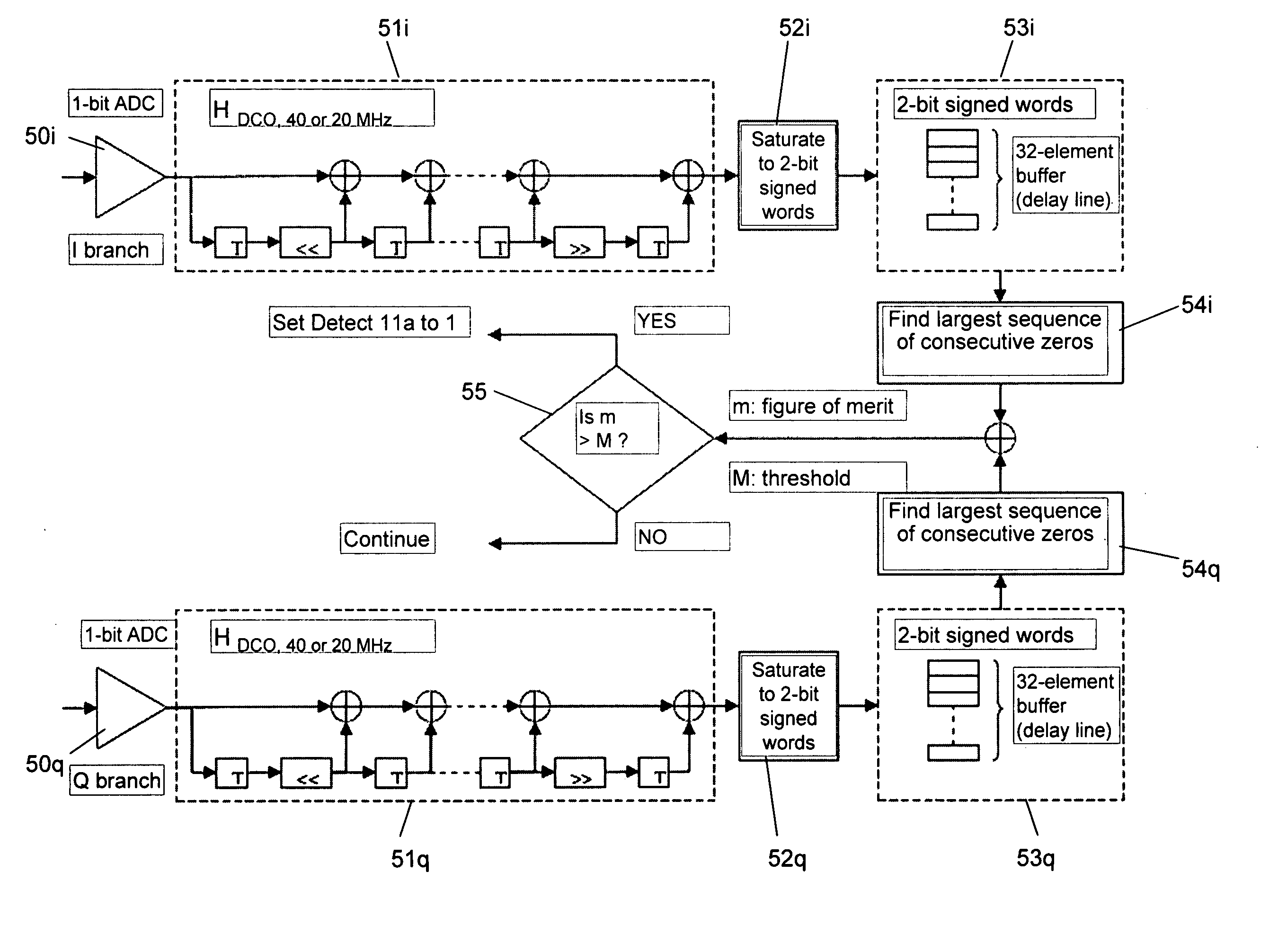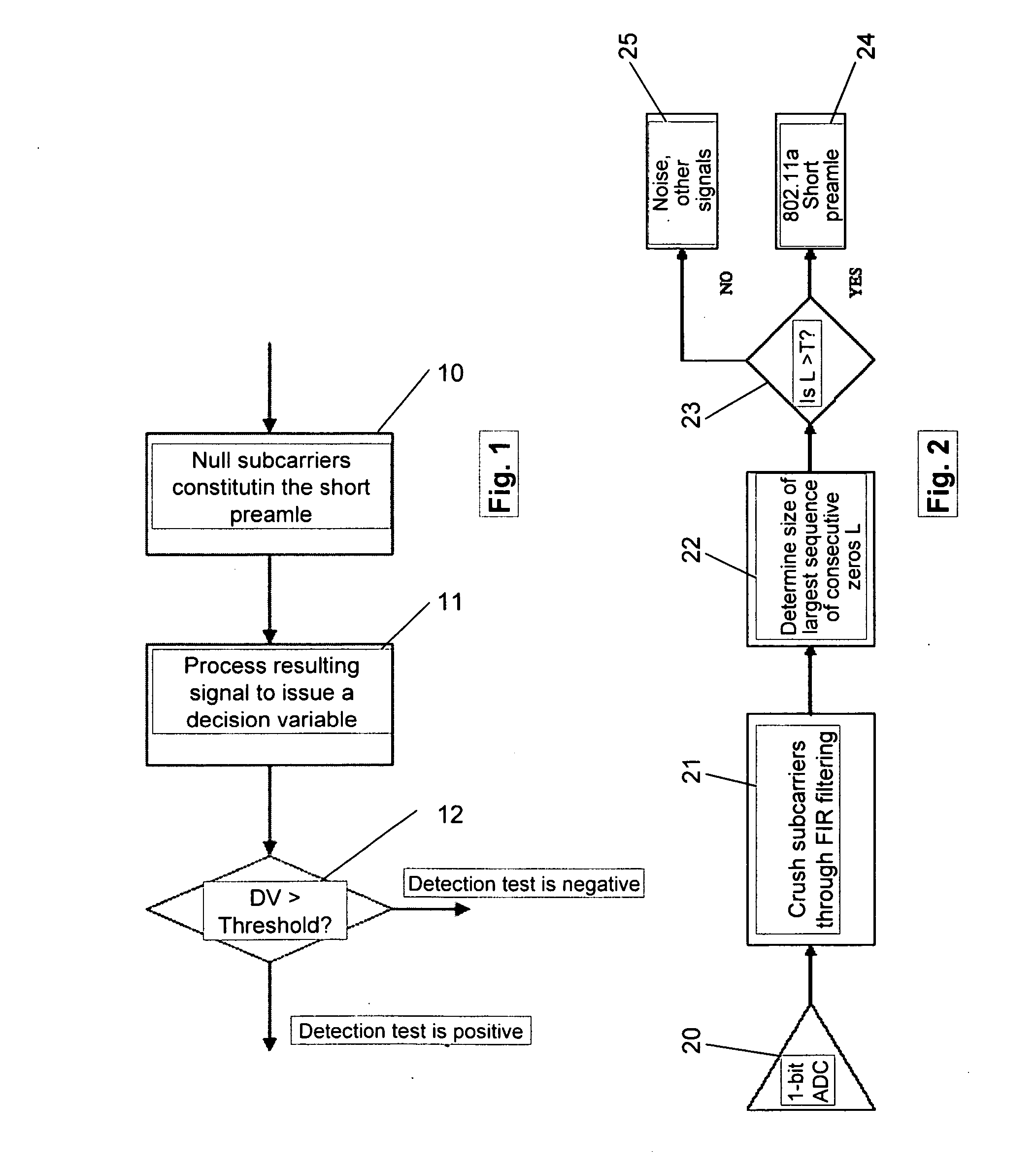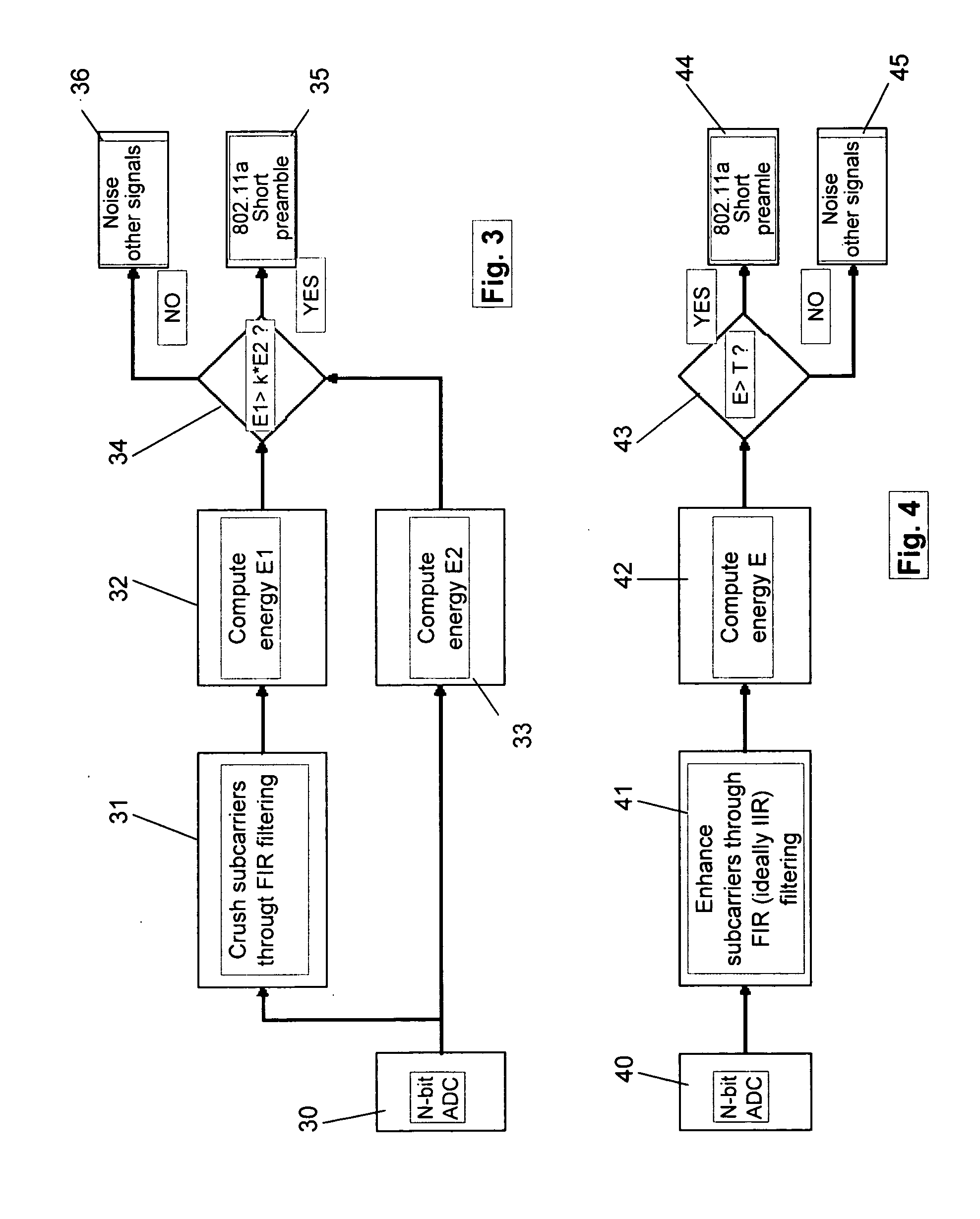Apparatus and method for detecting preambles according to IEEE 802.11A wireless LAN standard
a technology of preambles and apparatus, applied in electrical apparatus, modulated carrier systems, digital transmission, etc., can solve the problems of consuming a lot of power, affecting the detection algorithm of existing state of the art, and invoking power hungry digital signal processing too, so as to achieve significant power savings
- Summary
- Abstract
- Description
- Claims
- Application Information
AI Technical Summary
Benefits of technology
Problems solved by technology
Method used
Image
Examples
first embodiment
[0025] The block diagram of FIG. 2 describes the detection scheme according to a In this preferred embodiment, the detection scheme is implemented upstream of the BBP in the RF block of the receiver. The received analog signal is coupled to an existing auxiliary 1-bit ADC 20 (whose sampling frequency is 40 or 20 MHz) already used for DC offset estimation and compensation. This embodiment takes advantage of the particular structure of the short preamble. The short preamble consists of a well-balanced signal composed of twelve equally spaced subcarriers having equal amplitude and centered on DC which makes it immune to the distortion generated by the 1-bit ADC. A most simple finite impulse response (FIR) filter 21 can be used to cancel the subcarriers, and a digital signal processing (DSP) block 22 determines the largest sequence of consecutive zeros within the filtered signal. The number of consecutive zeros constitutes the decision variable L, which is compared in block 23 against ...
second embodiment
[0029] In both cases, i.e., in the first and the second embodiment, the FIR filters 21 and 31 used to cancel the subcarriers are extremely simple and depend on whether a DC offset has to be coped with:
When the RF architecture generates a DC offset that is not fully compensated, one should use the following filter: H40DCO=(12…2︸31 twos1) =1+2z-1+⋯+2z-31+z-32
(If the signal is sampled at 40 MHz) H20DCO=(12…2︸15 twos1) =1+2z-1+⋯+2z-15+z-16
(If the signal is sampled at 20 MHz)
in the other case: H40=(10-10…0︸29 zeros-101) =1-z-2-z-32+z-34
(If the signal is sampled at 40 MHz) H20=(10-10…0︸13 zeros-101) =1-z-2-z-16+z-18
(If the signal is sampled at 20 MHz)
[0030] It is to be noted that both, RF and BBP implementations can coexist in the same receiver and the latter can be used preferably to the former under certain adverse conditions.
[0031] In a third embodiment of the invention shown in FIG. 4, after the n-bit ADC 40 an infinite impulse response (IIR) filter 41...
PUM
 Login to View More
Login to View More Abstract
Description
Claims
Application Information
 Login to View More
Login to View More - R&D
- Intellectual Property
- Life Sciences
- Materials
- Tech Scout
- Unparalleled Data Quality
- Higher Quality Content
- 60% Fewer Hallucinations
Browse by: Latest US Patents, China's latest patents, Technical Efficacy Thesaurus, Application Domain, Technology Topic, Popular Technical Reports.
© 2025 PatSnap. All rights reserved.Legal|Privacy policy|Modern Slavery Act Transparency Statement|Sitemap|About US| Contact US: help@patsnap.com



